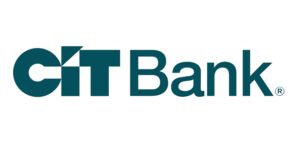
As of late 2017, the average credit care interest rate was 13.08 percent, according to the Board of Governors of the Federal Reserve System. At that rate, your credit card debt could double in less than six years. For people with bad to little credit history, that rate could be even higher than that.
Even if you do have a good or high credit score, definitely still consider debt consolidation if you’re struggling with paying off debt. Basically, debt consolidation is the process of rolling multiple debits into one, but the true objective of it is to lower your overall interest rates and payments. Check out hte best ways to consolidate credit card debt.
5 Credit Card Debt Consolidation Options
Each of the following options for credit card debt consolidation has their strengths and weaknesses, there is definitely no one option that is best for everyone. Consider your own financial situation when reviewing the features and benefits of each of these ways to put all of your debit into a single bill payment.
Balance-Transfer Credit Cards
One of the easiest ways to consolidate credit card debt is to use balance-transfer credit cards. Many cards offer 0 percent balance transfers for a certain period of time. For example, the Citi Simplicity card offers a 21-month balance transfer period at 0 percent, and numerous other cards routinely offer low- or no-interest transfers for 12 to 18 months. The savings you can get can be a major upside.
Pros
- Interest savings
- Additional features and benefits, such as extended warranties on purchases with some cards
Cons
- Potentially high rates after the promotional period ends
- Balance transfer fee of $5 or 3 percent, whichever is more
Personal Loans
Using a personal loan can pay off credit cards as well as act a good way of consolidating debt, especially if you have a good relationship with a bank and can qualify for a lower rate. Most banks and financial institutions actually offer unsecured, personal credit cards loans to qualified customers, and thi can be a good way to consolidate your outstanding debts into a single, bank-issued loan.
Pros
- Fixed interest rate
- Lower rates than credit card rates
- With some banks, no consolidation or loan origination fees
Cons
- Rates might be higher than 0 percent credit card balance transfer offers
Debt Management Plans
A plan to mange your debt is not a loan but rather finding a financial arrangement that will work for you. Use a credit counseling company to help you negotiate with your creditors on your behalf to arrange a repayment pan that lowers your outstanding balance, your interest rate or both. From there, you will make a monthly payment to the credit counseling company for a specified term until the agreed0upon amount is paid off. Although this sounds like a good deal, entering a debt management plan can trigger negative credit problems.
Pros
- Reduced payment amount or interest rates
- One monthly payment for all your outstanding debts
- A freeze on your accounts so creditors don’t pursue legal action against you
Cons
- Damage to credit history
- Damage to relationship with lenders
- Payment of fees to credit counseling company
Home Equity Line of Credit
Another method of paying off your debit is to borrow against the equity in your home. Your new home equity loan will require just one monthly payment, and you will be able to get a rate lower than the average credit card interest rate. Essentially, you’re borrowing from yourself if you use a home equity line of credit, since you’re borrowing the equity in your home. However you will be dealing with a third-party lender, which will lead you to the main negative of a HELOC putting your house up as collateral. If you can’t pay back your loan, your home might face a foreclosure.
Pros
- Lower rates than credit card interest rates
Cons
- Might pay loan origination fees
- Putting up house as collateral is dangerous if you can’t make the payments
Borrowing From a 401k
For those of you who have a 401k, you can actually borrow up to half the value, up to $50,000, for hardship purposes, which are defined by each individual sponsor. One of the benefits of borrowing using this method is that the money you must repay, both principal and interest, goes directly back into your bank account.
The interest rate you normally have to pay is low, and the loan doesn’t appear on your credit report. However you might have to forgo any long-term benefits regarding your retirement account. Failure to pay back the loan results in ordinary income tax and other early withdrawal penalties on the full amount of your outstanding loan.
Pros
- No lender — repay yourself
- If loan is repaid, no early withdrawal penalty if younger than age 59.5
- Lower interest rates than credit cards
- No credit ramifications if you default
- Terms of up to five years
Cons
- Default can trigger taxes and penalties
- Loss of interest while money is out of the account
- Must repay loan within 60 days of losing or changing jobs
 |
 |
Bottom Line
For those of you that have racked up some sort of debt, definitely consider debt consolidation as it can help you pay back your debts by grouping them up into one single bill payment. There are multiple ways of going about this and there aren’t any absolute methods to do so.
Start off by considering your own financial situation and think about which of the methods we listed above will most work for you! For more posts like this, check out our list of credit card bonuses!




Leave a Reply